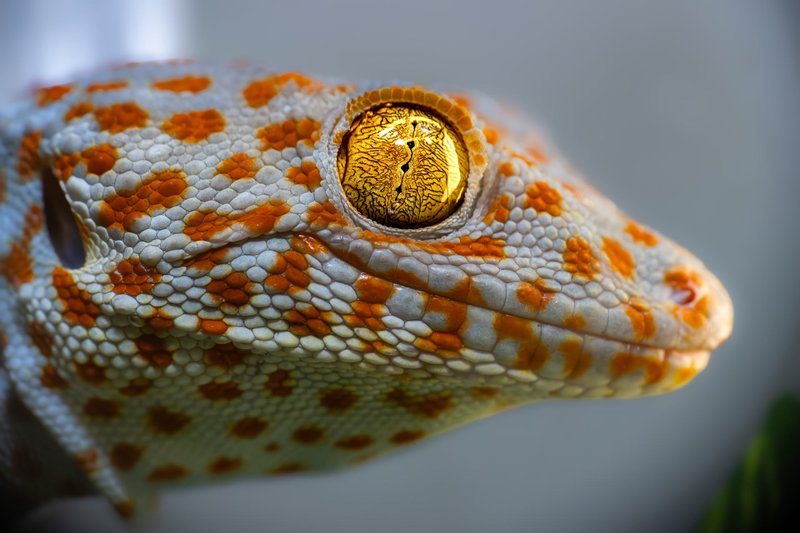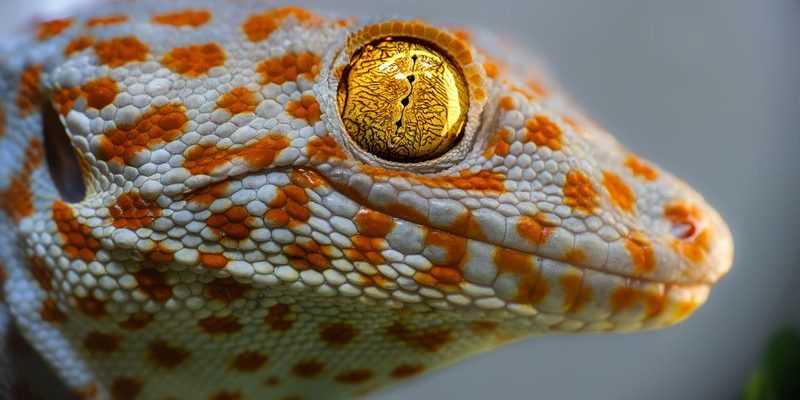
Tokay geckos are not just interesting because of their resilience; they also have a fascinating lifestyle and a distinct personality. These lizards, with their vibrant colors and distinct calls, are a sight to behold. They can often be found clinging to the walls of houses or in trees throughout Southeast Asia, and they thrive in habitats ranging from dense rainforests to dry urban areas. So, how do these creatures manage to withstand such diverse and sometimes harsh conditions?
Physical Adaptations of the Tokay Gecko
One of the most impressive aspects of the Tokay gecko is its physical adaptations that help it survive. Their skin is covered in specialized scales that not only protect them from predators but also help them maintain moisture. Think of a water bottle with a tight seal; that’s how their skin works to prevent dehydration.
Another amazing feature is their ability to change color slightly. While they don’t shift hues like a chameleon, Tokay geckos can become darker or lighter depending on their environment. This helps them blend in with their surroundings, providing essential camouflage from predators.
Additionally, these geckos have strong, sticky toe pads that allow them to climb almost any surface. Whether it’s slick tree bark or the side of a house, Tokay geckos can navigate easily, searching for food or escaping danger. Their physical traits are finely tuned to help them thrive where many other creatures might perish.
Behavioral Traits That Enhance Survival
In addition to their physical adaptations, the Tokay gecko exhibits several behavioral traits that support their survival. These lizards are mostly nocturnal, which means they’re active at night. This not only helps them avoid daytime predators but also allows them to hunt for insects when it’s cooler and more humid. Imagine if you only went grocery shopping at night to avoid the crowds and heat—that’s a smart strategy, right?
Another interesting behavior is their territorial nature. Male Tokay geckos are known to be quite vocal, using loud calls to establish their territory and ward off rivals. These calls aren’t just for show; they communicate vital information about their location and readiness to mate. It’s like a personal announcement system to let others know who’s in charge.
When threatened, they can drop their tails as a defense mechanism, which may distract predators and allow them to escape. Although losing a tail is a significant loss, Tokay geckos are capable of regenerating it over time. Their behavioral strategies are clever adaptations that improve their chances of survival.
Diet and Feeding Habits
Let’s talk about food because, honestly, survival is all about eating well, isn’t it? Tokay geckos are carnivorous, meaning they primarily munch on other small creatures. Their diet usually includes insects like crickets, cockroaches, and even small mice. This variety means they’re not picky about food, which is a big advantage when resources are limited.
They’re also fantastic hunters, using their keen eyesight to locate prey at night. Once a Tokay gecko spots a meal, it uses its swift reflexes to catch the insect with its quick, sticky tongue. Here’s the thing: their ability to thrive on a wide range of prey allows them to adapt to various environments, whether in urban settings or wild jungles.
Interestingly, their feeding habits are also influenced by their surroundings. In harsher environments, they might rely more on larger prey or hunt more frequently to meet their energy needs. This flexibility is a testament to their resilience.
Environmental Resilience
So, how does the Tokay gecko manage to thrive in both humid rainforests and arid urban areas? It all boils down to their incredible environmental resilience. They can tolerate temperature fluctuations and changes in humidity, making them one of the more adaptable reptiles.
In tropical rainforests, they benefit from the abundance of food and shelter. But in urban settings, they often face more extreme weather and less natural cover. Tokay geckos are known to seek refuge in buildings, using human structures as their safe haven. It’s like they’ve found a clever way to turn urban life into a cozy home.
Additionally, their instincts prompt them to seek out microhabitats where the climate is more favorable, such as shaded areas during the hottest parts of the day. They’ve got this survival dance down to a science.
Reproduction and Life Cycle
Another fascinating aspect of the Tokay gecko’s survival is its reproductive strategy. Female Tokay geckos lay eggs that are often hidden in crevices or underneath leaves, protecting them from potential threats. This choice of nesting location is crucial, as it helps shield the eggs from predators and environmental stresses.
Once the eggs hatch, baby geckos, known as hatchlings, are independent right from the start, meaning they don’t rely on their parents for food or protection. This independence is vital in harsh environments, where resources can be scarce, and the competition is fierce.
The rapid maturation of Tokay geckos also aids their survival. They grow quickly and reach maturity within a year, allowing them to reproduce and continue the cycle. This quick turnaround is essential for maintaining their population in changing environments.
Conservation and Future Challenges
Despite their remarkable adaptations, Tokay geckos face several challenges, primarily due to habitat loss and illegal pet trade. As urban areas expand and forests are cleared, these geckos lose their homes. This situation raises important questions about their long-term survival.
Conservation efforts are crucial to protect the habitats that Tokay geckos rely on. Supporting sustainable practices and awareness can help ensure that these fascinating lizards continue to thrive. Honestly, it’s a shared responsibility to protect them and respect their habitats.
While they are currently widespread, the threats they face could disrupt their populations. It’s vital to keep an eye on these beautiful creatures and appreciate the unique ways they survive in harsh environments.
The Importance of Understanding Tokay Geckos
Understanding the adaptations and behaviors of the Tokay gecko isn’t just about appreciating a unique lizard; it’s about recognizing the delicate balance of ecosystems. The Tokay gecko plays an important role in controlling insect populations, making it a beneficial species for any environment.
By learning about these incredible creatures, we can gain insight into how life adapts to survive in the most challenging conditions. Whether it’s in the heart of a jungle or a bustling city, the Tokay gecko offers a glimpse into the resilience of nature.
So next time you see a Tokay gecko, remember how this little lizard triumphs over adversity. Their story is a reminder of the strength of life and nature’s ability to adapt and evolve, even in the face of challenges.
In conclusion, the Tokay gecko is a fabulous example of how life can thrive against the odds. Its unique adaptations, clever behaviors, and resilience make it a fascinating subject worth studying. Let’s continue to learn more about these remarkable creatures and advocate for their protection, ensuring that they flourish for generations to come.

